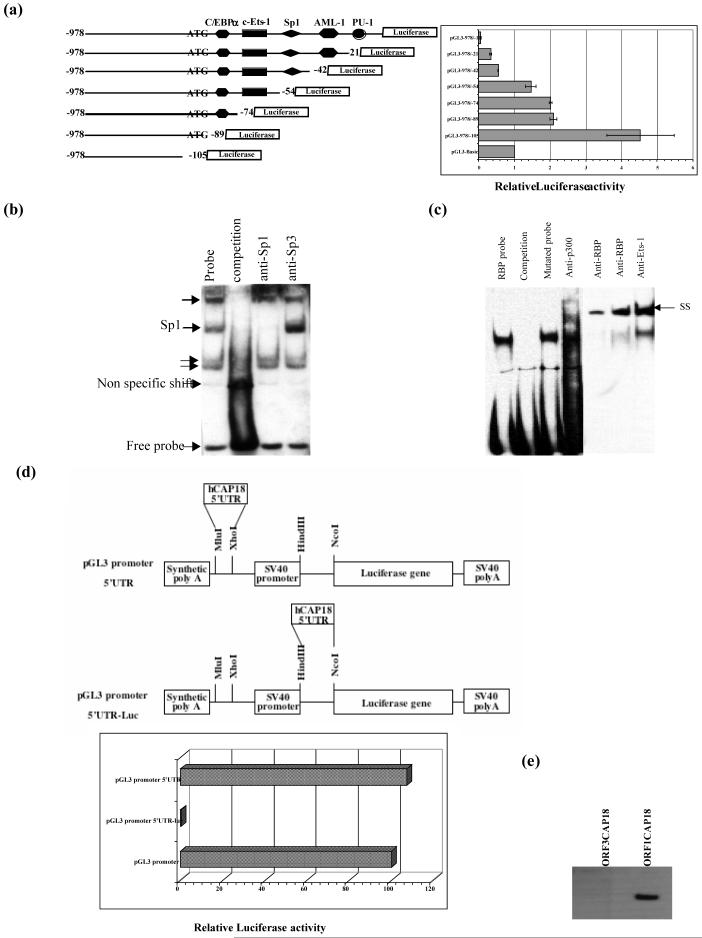Fig. 5.
Identification of a repressor element within the 5′UTR sequence of hCAP18. (a) A series of hCAP18 promoter 3′ deletion constructs were ligated to the luciferase gene in the pGL3 basic vector; schematic shows potential transcription factor binding sites. Following transfection of K562 cells with equal amounts of each construct, luciferase activity was measured in cell lysates and normalized to Renilla activity. The 3′ deletion construct missing the upstream ATG (pGL3-978/-105) showed at least 2-fold more promoter activity compared to pGL3-978/-74. Results are reported as the ratio of the test construct to the promoterless pGL3 basic. Data shown are means (± SD) of 3 independent experiments. (b) Binding of nuclear proteins from K562 cells to hCAP18 promoter probe -50 containing a putative repressor element. Four protein-DNA complexes are indicated by arrows. The nuclear extract is incubated with the biotinylated probe (lane 1) alone, or in the presence of excess cold competitor (lane 2). (c) EMSA analysis was performed using RBP probe incubated with nuclear extract from K562 cells. Lane 1 shows the formation of a specific protein-DNA complex, which was competed away by excess cold competitor (lane 2), but not with an unlabeled mutated probe (lane 3). A supershift was identified using antibodies specific to p300 (lane 4), RBP (lanes 5 and 6) and Ets-1 (lane 7) transcription factors. (d) hCAP18 5′UTR was amplified then inserted into pGL3 promoter vector. Schematics of two different constructs are shown. The 5′UTR was not found to inhibit downstream luciferase expression when inserted within the multiple cloning site. Insertion of the same sequence in front of the luciferase gene ORF completely abolished promoter activity. (e) Western blot analysis was performed using K562 cell lysates transfected with either ORF3CAP18 or ORF1CAP18 constructs. The blot was then probed for hCAP18 using anti-V5 antibody. 5′UTR abolished hCAP18 production as shown in the first lane.

